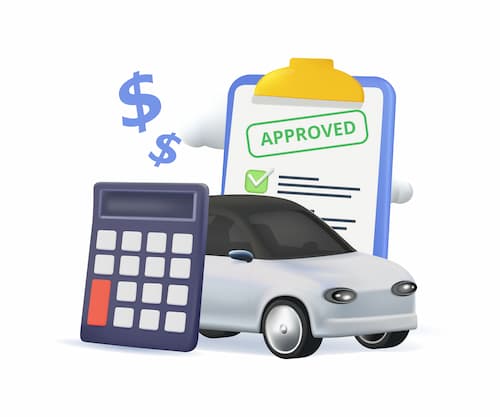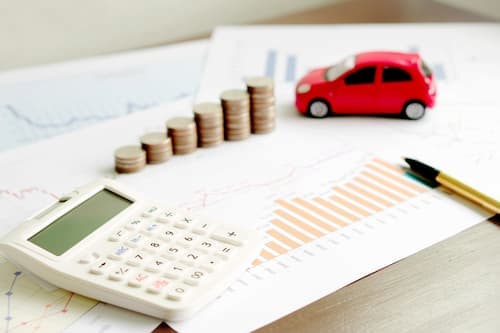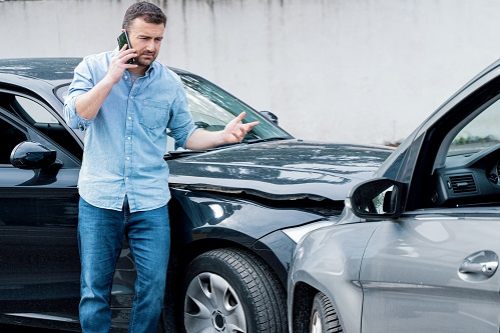- Do you have to add a teenage driver to your insurance?
- What happens if you don't add your teen to your insurance? Risks and penalties
- Can a teenager get their own car insurance policy?
- Should a teenager be listed as a primary driver?
- How much do rates increase with a teen as a primary driver?
- Car insurance calculator for teens: Estimate car insurance cost
- Car insurance calculator for teens
- How to get cheaper car insurance for a teenage driver
- Frequently asked questions
Do you have to add a teenage driver to your insurance?
Insurance companies require that all drivers in the household be added to the policy unless you can show that they are insured elsewhere. That means you'll probably have to add them. Here's what you need to know:
- Once a teenager has a driver's license, they need at least state minimum coverage.
- A teen can be added to a parent’s policy or buy their own, which requires an adult cosigner for minors.
- Where you live dictates when you must add a teen driver to your insurance policy, either as soon as they get a permit, or when they are fully licensed.
It's a good idea to talk to someone at your insurance company before your teen starts learning to drive, so you know what to expect.
What happens if you don't add your teen to your insurance? Risks and penalties
If you don't add your teen to your insurance and they drive your vehicle, there can be serious legal repercussions.
- If your teen causes an accident and doesn’t have insurance, your carrier could refuse to pay the claim and even cancel your coverage.
- When you find coverage again, rates will be higher due to the previous cancellation
- Your teenager could be ticketed for failure to have insurance, which could result in fines and a suspension of their license.
Although car insurance for your teenager is expensive, the negative consequences of allowing them to drive without coverage exceed the cost.
Can a teenager get their own car insurance policy?
If your teen driver is 18, they can get their own insurance policy. Younger drivers may be eligible for their own policy if they have an adult cosigner. However, it's important to note that car insurance rates are much higher for teen drivers on their own policy.
“By adding a teen driver to your existing auto policy, you can get them the same coverage you have for less money, and since you're probably paying for your teen's insurance either way, why not save,” says Tiffany Wright, spokesperson for AAA.
Insurance discounts and the parent’s insurance history can help lower rates when teens are added to a parent's policy. Without these, teenage drivers face significantly higher premiums.
PEOPLE ASK
How old do you have to be to get car insurance?
In most states, you need to be at least 18 years old to get your own car insurance policy. However, an adult may be able to cosign for a policy if you are still a minor.
Should a teenager be listed as a primary driver?
If you can avoid listing a teen driver as a primary driver, you should. The primary driver largely determines the cost of car insurance for that vehicle based on their age, gender and driving record.
Since teenagers lack experience behind the wheel, insurers charge them much higher insurance rates. So, if a teenager is the primary driver for a vehicle, that vehicle's insurance rates will be much higher.
If you have more cars than drivers, it may be possible to avoid having a teen listed as the primary driver. Listing a teen driver as secondary will help lower insurance rates since their factors aren’t being used as heavily in rate calculations.
If you can’t avoid having your teenager listed as a primary driver, consider assigning them to the least expensive vehicle on your policy to keep insurance rates as low as possible.
How much do rates increase with a teen as a primary driver?
Adding a teen as a primary driver on your auto insurance policy will substantially increase your premiumThe payment required for an insurance policy to remain in force. Auto insurance premiums are quoted for either 6-month or annual policy periods..
At age 16, added to a parent's policy, the average annual rate for a 16-year-old female is $4,294; for a male, it's $4,606.
On an individual policy where the teen is the primary driver, average car insurance rates are $6,757 for a 16-year-old female driver and $7,541 for a 16-year-old male driver.
Here's what it looks like to add a teen to a parent's policy as a secondary driver vs. the teen having an individual policy by the company.
| Company | Average annual premium female (solo policy) | Parent's premium when adding a teen female | Average annual premium male (solo policy) | Parent's premium when adding a teen male |
|---|---|---|---|---|
| Travelers | $4,516 | $3,427 | $5,155 | $3,810 |
| GEICO | $4,783 | $2,473 | $5,315 | $2,622 |
| Nationwide | $4,885 | $2,372 | $5,685 | $2,510 |
| State Farm | $4,886 | $2,893 | $5,851 | $3,200 |
| Progressive | $6,870 | $3,722 | $7,480 | $3,992 |
| Allstate | $7,105 | $3,878 | $7,766 | $4,195 |
| Farmers | $8,024 | $4,822 | $8,668 | $4,921 |
| USAA* | $4,296 | $2,346 | $4,473 | $2,491 |
Car insurance calculator for teens: Estimate car insurance cost
Many factors affect car insurance rates, such as age, location, gender and coverage. Use the calculator below to estimate the cost of car insurance for your teenage driver.
People ask
When do you have to add a child to your car insurance?
While many states don’t require teen drivers to be added until they receive their license, others require teens to be added when they get a permit and start practicing. Your insurer will have its own rules, so be sure to ask.
How to get cheaper car insurance for a teenage driver
Teenage car insurance is significantly more expensive than for older drivers. However, there are ways you can reduce rates to a more manageable cost, including:
- Avoid adding the teenager as a primary driver. If you have more cars than drivers, consider adding the teen as a secondary driver.
- Add the teen to the cheapest car. Putting a teen as the primary driver on a less expensive vehicle lowers overall costs.
- Look for discounts. Many insurers offer savings that may be applicable, such as good student, away student, multi-car, and defensive driving discounts.
- Shop around. Insurers offer different rates, so compare multiple companies to find the best deal.
Methodology
We partnered with Quadrant Information Services to field car insurance rates in all 50 states and Washington, D.C. Averages are based on our full coverage data set.
This data set is based on:
- Bodily injury liability of $100,000 per person and $300,000 per incident
- Property damage liability of $100,000 per incident
- Comprehensive and collision deductibles of $500
- Honda Accord LX
- Good credit
- A clean driving record
- 12-mile commute, 10,000 annual mileage
Rate data is drawn based on:
- A policy with two adult drivers on one car
- A policy with two adult drivers and one teen driver on one car
Learn more about our data and methodology.
Frequently asked questions
Does my teenager need insurance to drive my car?
Yes, a teenager must be insured like every licensed driver in your state or risk legal penalties and denied claims. However, if your teenager only has a learner's permit, your state may not require them to be added to your insurance policy until they receive a full license.
Does the primary driver on insurance matter?
Yes, the primary driver listed on an insurance policy matters. Insurance companies partially base rates on a vehicle's primary driver. The driver’s age, driving record, gender and marital status can significantly affect car insurance rates.



